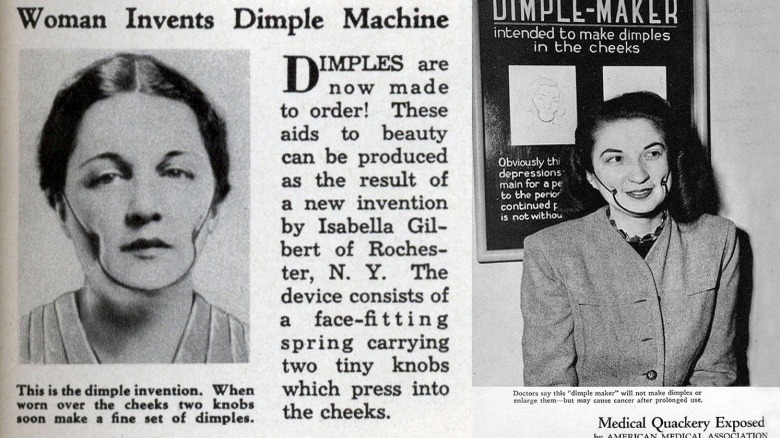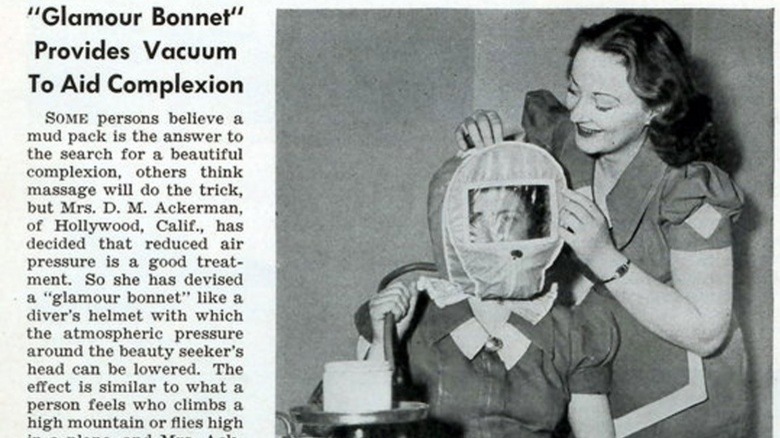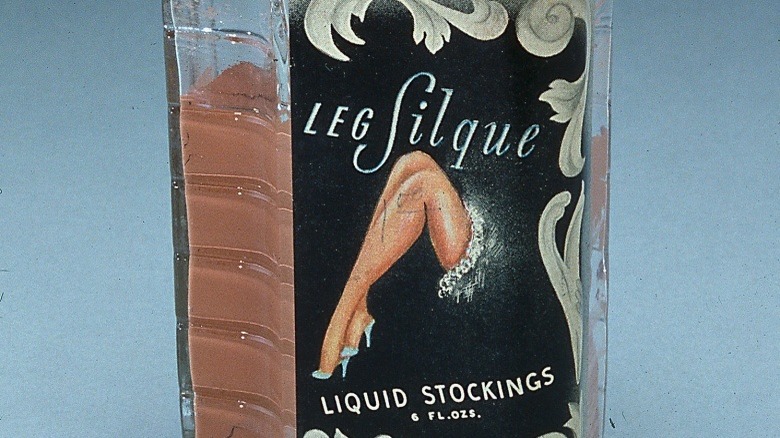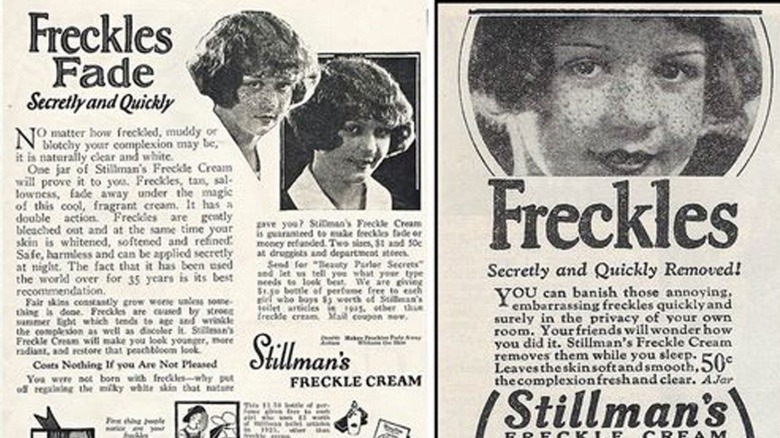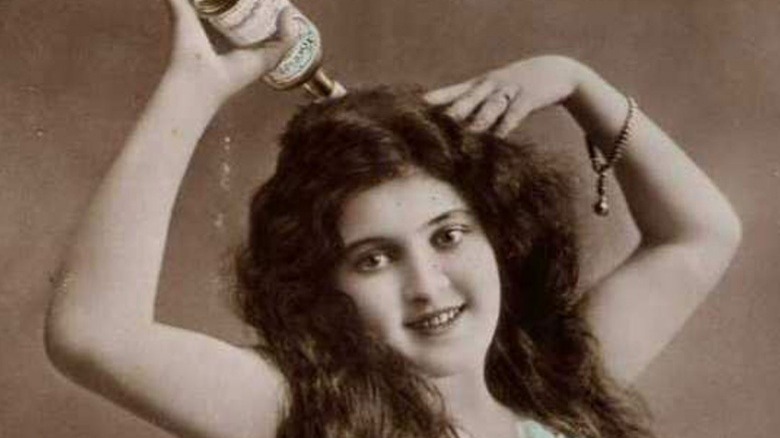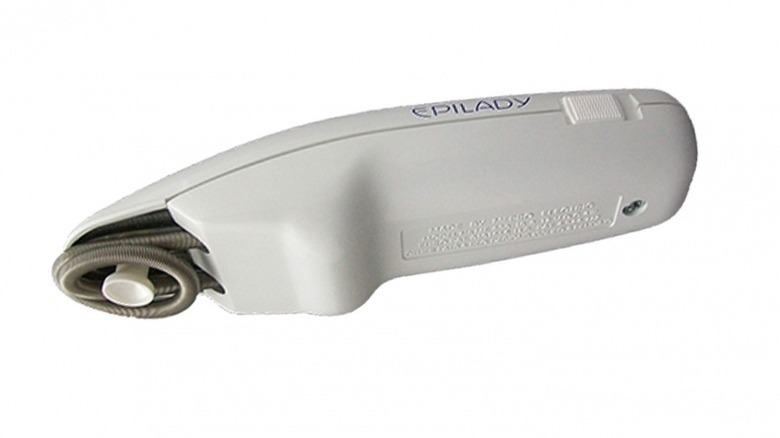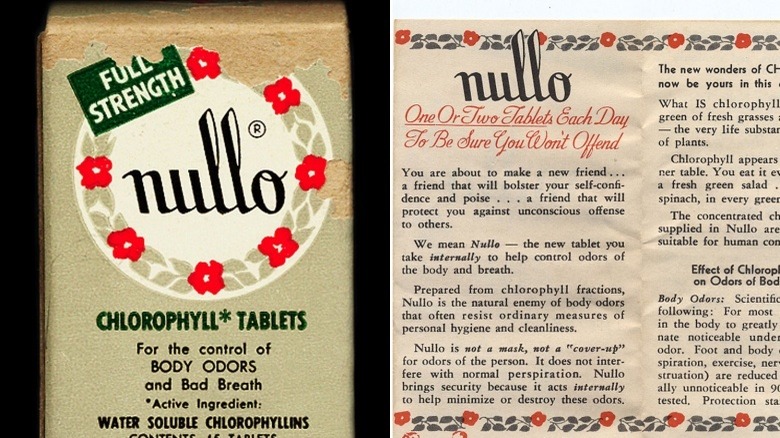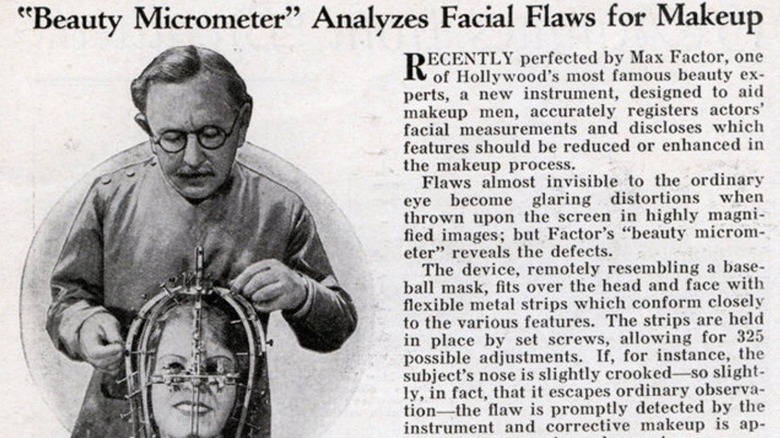Hysterical Beauty Products Your Mom Used
Beauty products have come a long way since our moms were young. Throughout the ages, women have put themselves through hell in the pursuit of beauty. From vibrating "fat-melting" belts to liquid pantyhose, the beauty market has always found new and inventive ways to capitalize on our obsession with looking good.
Even today, some of our more common beauty practices seem downright strange when you think about them objectively — we have doctors slice into us to remove fat, change the structure of our faces, or put plastic bags filled with liquid into our chests. We inject poison into our faces to combat wrinkles. Will the women of 2116 look back at us and wonder, "What in the world were they thinking?!" Maybe, or maybe not.
At any rate — even though it's a bit hypocritical — we can still learn (and laugh) at some of the beauty products used by our mothers, grandmothers, and other women throughout history.
Dimple Maker
Back in 1936 — the same year the Shirley Temple movie Dimples was released — Isabella Gilbert of Rochester, New York, capitalized on the trend with a beauty product that looks more like a torture device: her Dimple Maker invention. The spring-loaded beauty device fit over the face and pressed two knobs into your cheeks, which she claimed would "soon make a fine set of dimples."
The American Medical Association took issue with Ms. Gilbert's claims, saying that the machine would not make dimples and could even cause cancer after prolonged use. Apparently, even modern-day quacks never got the memo, because there are products similar to the Dimple Maker still floating around in dark corners of the Internet today.
Glamour Bonnet
Apparently, nothing gives you that "rosy" glow like slow asphyxiation. At least, that's what the creators of 1941's Glamour Bonnet beauty product would have us believe. Devised by Mrs. D.M. Ackerman of Hollywood, California, the bonnet supposedly emulated the effects of "what a person feels who climbs a high mountain or flies high in a plane."
Essentially, the Glamour Bonnet was the equivalent of tying a shopping bag over your face, then using your vacuum's hose attachment to suck all the air out of it. But unlike those pesky opaque shopping bags with their "Thank you!" messages, the Glamour Bonnet creator boasted that "a window has been installed so the customers can read during treatments." Just remember to turn off the machine when the words start to get blurry.
Rejuvenique mask
We actually remember seeing the infomercial for this Jason-esque contraption back in the late '90s. The Rejuvenique Ultimate Facial Toning System runs on a 9-volt battery and claims to deliver tiny shocks to the muscles of your face in order to firm them up. It's essentially a weak TENS unit for your face. Rejuvenique was apparently popular enough to score former Dynasty star Linda Evans as a spokesperson — and was even on the shelves of Sears for a time — but it didn't score quite as well with the FDA. The device's inventor came under intense scrutiny for marketing his product without being able to backup his claims of efficacy.
Liquid pantyhose
The introduction of nylon pantyhose in May 1940 was a huge success — over 64 million pairs of the stockings were sold in their first year on the market. But just over two years later, the United States was in the height of the war effort and a ration was soon imposed on nylon. The ration would be eased on nylon in 1945 — resulting in huge lines called "nylon riots" as women fought over the limited pairs available — but in the intervening years, women had to get creative with their stockings.
Enter: liquid pantyhose, liquid makeup designed for your gams — like the Leg Silque pictured here — which was painted on the legs to give the illusion of nylon hosiery. Truly dedicated leg artists would even use black eyeliner pencils to draw the "seam" up the back.
Freckle cream
While many modern women choose to embrace their freckles, the antiquated fad of covering up or removing your freckles with various beauty products continues to this day. Perhaps one of the longest-running rackets for removing freckles belongs to Stillman's Freckle Cream, which has been marketing its salve since at least the '20s.
You can still buy Stillman's today, although it now seems to have shifted its focus to the Middle Eastern and Asian markets. Beware if you decide to try it yourself — in recent years, Stillman's has been found to have excessively high levels of mercury in its creams. As if that wasn't scary enough, here's another terrifying freckle-remover method for your consideration: freezing them off with carbon dioxide.
Herpicide
In the late 1890s, Dupont Newbro — a druggist from Montana — became convinced that dandruff (and baldness) was caused by a parasite. Newbro then worked with "bacteriologists" of the day and came up with the Newbro Herpicide formula, which he claimed was efficient at killing the little buggers that caused these (and other) hair problems.
It appears that consumers weren't as concerned by animal testing back then, as evidenced by this advertisement for Herpicide which touts the results of an experimental test of the formula performed on rabbits. Whether it worked or not, Herpicide became popular nationwide and the brand's slogan, "Too late for Herpicide," became a popular catchphrase that lasted long after the tonic was no longer being sold.
Epilady
Okay, stow those guilty looks — we know some of you out there probably used an Epilady at some point in your dark past. It's okay, we did too, until we realized that spinning springs or blades yanking out leg or underarm hair at top speed is no way to run a railroad (or a beauty product regimen to replace shaving).
Originally conceived in 1986, the Epilady made a huge initial impact on the hair-removal market, raking in hundreds of millions of dollars in sales during the first few years alone. The Epilady came with one major drawback: it was seriously painful to use. Even late comedienne Joan Crawford joked about it back in the day, telling audiences of the '80s, "I walk down the hotel corridor, and when I hear screams, I say, 'Is it a murder — or is it an Epilady?'"
The Krok sisters — who originally purchased the rights to the Epilady and introduced it to American consumers — later filed for bankruptcy and had to pay millions in damages over a lawsuit brought by a former business partner. Despite that, the Epilady (a new "improved" version) is still available for sale today, if you're in the market for a new meat tenderizer.
Nullo tablets
Got stank breath? Whisk it away naturally with Nullo chlorophyll tablets. That's right, Nullo (originally marketed in the 1940s and '50s) supposedly is the "tablet you take internally to help control odors of the body and breath."
The natural cleansing action of chlorophyll was touted as being able to neutralize your halitosis, underarm body odor, and even menstrual odors. If you had any doubts about Nullo, just go check out the testimonials on the company's website — that's right, you can still buy Nullo today!
In particular, we enjoy this testimonial from a deer hunter: "I shot this deer with a muzzleloader after eating Nullo for about 4 days. He walked within 50 feet of me and never knew I was around. Eight points and 150 pounds. All I can say is WOW! Thanks Nullo!"
So ladies, if you have a desire to take down a buck at 15 yards, but shark week is interfering with deer season, maybe you should give Nullo a try.
Beauty Micrometer
In 1932, Maksymilian Faktorowicz, better known as famed cosmetic innovator Max Factor, debuted his latest invention: the bizarre and cringe-inducing Beauty Micrometer. While it looks like something out of Hellraiser, the invention was designed to measure even the tiniest variances in the shape of your face.
"Flaws almost invisible to the ordinary eye become glaring distortions when thrown upon the screen in highly magnified images; but Factor's 'beauty micrometer' reveals the defects," an ad for the product read. While the Beauty Micrometer looks like nothing but pain and quackery to us, the Max Factor official website claims that Factor was able "to measure the dimensions of a person's facial structure to within 1/100th of an inch. This [helped] him determine how to use shading to create 'the perfect face.'"
Slenderizing salons
In the 1930s and '40s, women didn't "work out," they "slenderized." So-called "slenderizing salons" or "figure control rooms" popped up all over the country, with claims that just 15 minutes in one of these vibrating horror shows could reduce inches from your waist or other problem areas. Now that's a beauty product! Except, well, you know.
In 1940, famed photographer Alfred Eisenstaedt went on assignment for LIFE magazine to one of these salons with entirely unamused model Pat Ogden for a demonstration of these bulge-fighting contraptions. From the "Slendo Massager" to the "Roaler Massager" — which looks like it could be quite fun under different circumstances — vibration exercise equipment is an unproven fad which continues to this day, but now under the more trendy name "VbX."

